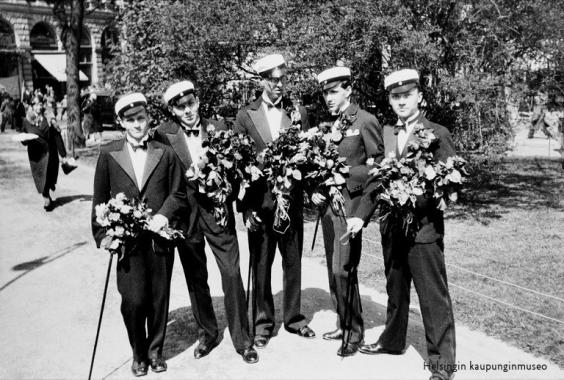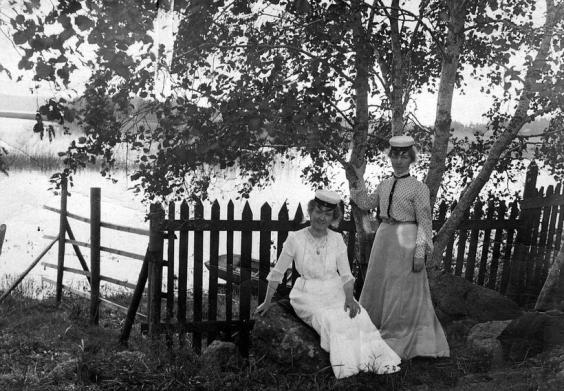History
The Matriculation Examination was first arranged in Finland in 1852. In the beginning it was the entrance examination to the University of Helsinki, and in it one had to show sufficient evidence of an all-round education and a knowledge of Latin.

Early stages
The examination was restructured in 1874 when the main responsibility for its organisation was given from the university to upper secondary schools. Schools tested their graduating pupils in four different subjects: Finnish language, Swedish language, one foreign language (Latin, German, French or Russian), and mathematics. From 1901 onwards, candidates could choose between two different levels of difficulty in the mathematics test. Censors from the University of Helsinki prepared and assessed the test questions. After passing all four written tests listed above, candidates could take part in oral tests organised by the university. Those candidates who passed both the written and oral tests could sign in at the university and take the title “matriculate”.
Until 1874, women were only allowed to take part in the examination with a special permission. The practice was abolished in 1874, but women still needed to request a special permission to enrol at the university until 1901.
Modern Matriculation Examination (1921–)
The Matriculation Examination Board was founded in 1921. It continued the work of the antecedent Matriculation Examination Committee. By this time, the examination had come to consist of five compulsory tests: the mother tongue test, the second national language test, the foreign language test, the mathematics test and the test battery in humanities and natural sciences (physics, chemistry, biology, geography, history and religion).
The examination was organised in the spring and in the autumn. However, only those candidates who had not passed all their compulsory tests in the spring examination could take part in the autumn examination. Later it became possible for candidates to improve their spring examination’s grades by retaking tests in the autumn, or to supplement their spring examination with additional tests.
The old tradition of using the Matriculation Examination as a university entrance test still lived on at the beginning of the 20th century. However, as the number of matriculates began rising rapidly, universities gradually started arranging additional entrance examinations.

During the Second World War, young men serving at the front could pass the Matriculation Examination by sitting only three tests: the mother tongue test, one foreign language test, and either the mathematics test or the test battery in humanities and natural sciences. The Matriculation Examination was not organised at all in 1940 and 1942; pupils attending the last year of upper secondary school qualified automatically. They received the same grades in their Matriculation Examination Certificate as their grades in the upper secondary school leaving diploma.
In 1947 the number of compulsory tests was reduced from five to four. Candidates could choose between the mathematics test and the test battery in humanities and natural sciences. Should they wish so, they were also allowed to take two additional tests. From the 1970s onwards, candidates who had already passed the examination could supplement their examination with additional tests of which they got a separate certificate.
During the 1990s and 2000s, the Matriculation Examination has been thoroughly renewed. Since 1994, candidates have been able to spread their examination into three consecutive examination periods. They may complete their examination in the autumn as well as in the spring. In 2005 a new examination structure was introduced in the whole country, having been in testing in a set of upper secondary schools since 1996. In the new examination structure, candidates take a minimum of four tests of which only the mother tongue test is compulsory. The other three tests may be chosen between the second national language test, the foreign language test, the mathematics test and the test battery in humanities and natural sciences. There was much controversy in 2005 around the fact the second national language test was no longer compulsory. In 2006 the test battery in humanities and natural sciences was furthermore abolished and instead divided into separate tests in each of the subjects included. Since 2007, the mother tongue test has consisted of an essay and a textual skills section instead of two essays that were in use before.
In the 1850s, less than a hundred people passed the Matriculation Examination annually. In the 1950s there were already around 4,000 matriculates each year. Today some 30,000 candidates pass the examination yearly.
